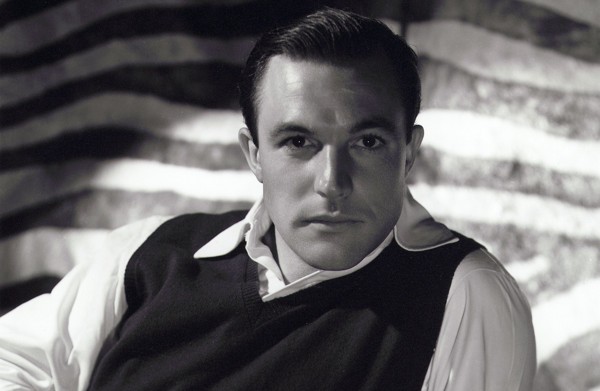01.28

This week (January 28-February 3) in Hollywood history – Gloria Swanson married Henri de la Falaise (January 28, 1925); Paul Newman married Joanne Woodward (January 29, 1958); Elizabeth Taylor divorced Conrad Hilton Jr. (January 29, 1951); W.C. Fields was born (January 29, 1880); Victor Mature was born (January 29, 1913); Gene Hackman was born (January 30, 1930); Samuel Goldwyn died (January 31, 1974); Clark Gable was born (February 1, 1901); John Ford was born (February 1, 1895); Gene Kelly died (February 2, 1996); Boris Karloff died (February 2, 1969): Philip Seymour Hoffman died (February 2, 2014).
Highlighted story of the week –
On February 2, 1996, Gene Kelly died at the age of 83 from a stroke, at his home in Beverly Hills, California. Born in Pittsburgh in 1912, Kelly graduated with a degree in economics from the University of Pittsburgh during the Great Depression. With jobs scarce, he worked at a dancing school partly owned by his mother, who had insisted that all of her five children take music and dance lessons throughout their childhood. On the side, he formed a dance act with his brother Fred, appearing in local nightclubs and theater productions. In 1938, Kelly decided to try his luck in New York City. He got his first Broadway job in the chorus of Leave It to Me, starring Mary Martin.
His first starring role on Broadway came in My Pal Joey. He then signed an exclusive contract with the producer David O. Selznick and headed to Hollywood. Selznick promptly lent Kelly to Metro-Goldwyn-Mayer, a studio best known at the time for its large-scale movie musicals. MGM put Kelly in his first film, For Me and My Gal (1942), co-starring Judy Garland, and soon bought his contract from Selznick. Two years later, the studio lent him out to Columbia Pictures to choreograph and co-star in Cover Girl, opposite a then-unknown Rita Hayworth. This film was Kelly’s first major big-screen success and his first collaboration with the director and choreographer Stanley Donen.
Kelly continued his trail-blazing in the world of movie dance in his next big hit, Anchors Aweigh (1945), performing a dance routine with the animated mouse Jerry from the popular Tom and Jerry cartoon series. The eight-minute sequence cost MGM $100,000 and took two months to film, but it was celebrated as a breakthrough moment in cinema for its combination of live action and animated footage. After serving in the U.S. Navy during World War II, Kelly returned to the silver screen with 1948’s The Pirate, again opposite Judy Garland. He also made two more films with Frank Sinatra (his Anchors Aweigh co-star), including the hit On the Town, which Kelly directed and choreographed with Donen.
In 1951, Kelly headlined An American in Paris, which won eight Academy Awards, including Best Picture. Kelly picked up a special Oscar, in honor of his “extreme versatility as an actor, singer, director and dancer, but specifically for his brilliant achievement in the art of choreography.” At the pinnacle of his career, Kelly cemented his iconic status with his work in what was arguably the last great movie musical, Singin’ in the Rain (1952). The movie featured one of the most memorable scenes in film history: Kelly dancing and singing alone on the street during a downpour, with only his umbrella for a prop.
As the popularity of big-budget movie musicals waned, Kelly’s films during the 1950s, Brigadoon (1954), It’s Always Fair Weather (1955) and Les Girls (1957), met with varying degrees of success. Kelly and Donen fell out after working together on their last film, It’s Always Fair Weather, partly for personal reasons: Kelly and Donen’s wife Jeanne Coyne fell in love and were married in 1960 (Kelly was previously married to the actress Betsy Blair). Kelly worked on other projects intended to raise the profile of modern dance, including the dialogue-free Invitation to the Dance in 1956 and an NBC television special, Dancing is a Men’s Game. He also choreographed for the ballet in Paris and San Francisco.
After Jeanne Coyne died of leukemia in 1973, Kelly focused on projects that would keep him close to Los Angeles, where he was raising their two children. Late into his career, he continued to make film appearances and direct the occasional movie, including Hello, Dolly! (1969). Kelly’s last big-screen role was in the kitschy Xanadu (1980), in which he performed a dance routine on roller skates. Kelly died on February 2, 1996 and his remains were cremated. There was no memorial or funeral, and the disposition of his ashes are not known.
Check back every Wednesday for a new installment of “This Week in Hollywood History.”
Michael Thomas Barry is the author of six nonfiction books that includes Fade to Black Graveside Memories of Hollywood Greats, 1927-1950.











